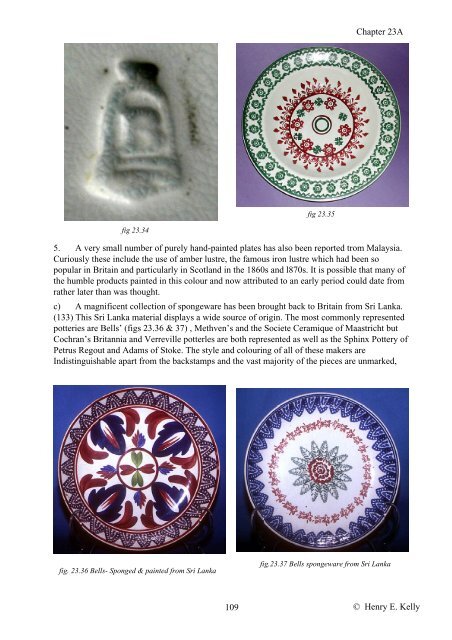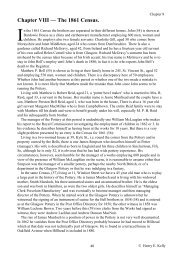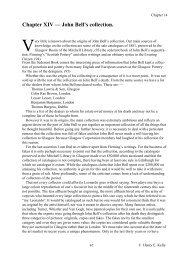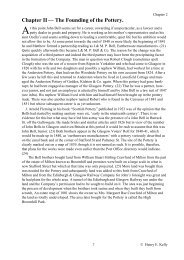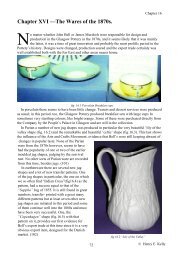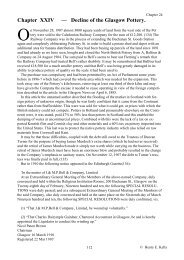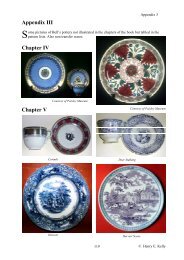Chapter XXIII — The Export Wares. - Bells Glasgow Pottery
Chapter XXIII — The Export Wares. - Bells Glasgow Pottery
Chapter XXIII — The Export Wares. - Bells Glasgow Pottery
Create successful ePaper yourself
Turn your PDF publications into a flip-book with our unique Google optimized e-Paper software.
fig 23.34<br />
<strong>Chapter</strong> 23A<br />
5. A very small number of purely hand-painted plates has also been reported trom Malaysia.<br />
Curiously these include the use of amber lustre, the famous iron lustre which had been so<br />
popular in Britain and particularly in Scotland in the 1860s and l870s. It is possible that many of<br />
the humble products painted in this colour and now attributed to an early period could date from<br />
rather later than was thought.<br />
c) A magnificent collection of spongeware has been brought back to Britain from Sri Lanka.<br />
(133) This Sri Lanka material displays a wide source of origin. <strong>The</strong> most commonly represented<br />
potteries are <strong>Bells</strong>’ (figs 23.36 & 37) , Methven’s and the Societe Ceramique of Maastricht but<br />
Cochran’s Britannia and Verreville potterles are both represented as well as the Sphinx <strong>Pottery</strong> of<br />
Petrus Regout and Adams of Stoke. <strong>The</strong> style and colouring of all of these makers are<br />
Indistinguishable apart from the backstamps and the vast majority of the pieces are unmarked,<br />
fig. 23.36 <strong>Bells</strong>- Sponged & painted from Sri Lanka<br />
fig 23.35<br />
fig.23.37 <strong>Bells</strong> spongeware from Sri Lanka<br />
109 © Henry E. Kelly


